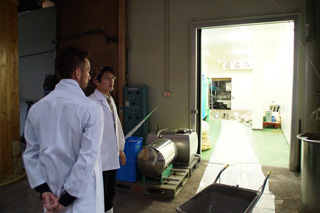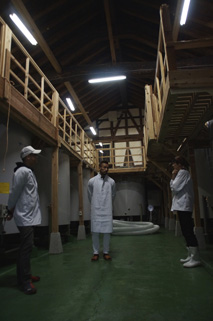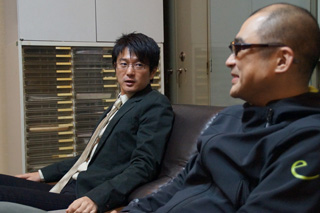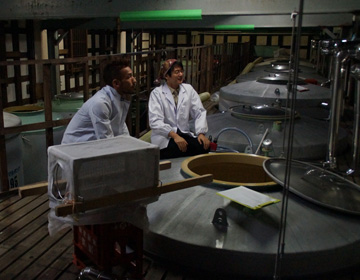 |
”Yeast” – a Necessity for ”Sake” makingI wonder how many brewers we have visited? We have mentioned this before, but once again, let me note that yeast is essential for sake making. Yeast is a must, as it helps glucose change to alcohol. The most common yeast called Kyokai yeast is distributed by the Japan Brewery Kyokai. There are currently 15 types of Kyokai yeast, and each is numbered as ”Kyokai number_____”. Meanwhile, yeast research and development are conducted around the country, and even in Akita, a new type called ”Akita Ryuka” yeast is the talk of the town. Yeast research is conducted to fit different needs, for example adding fragrance or for stains. |
Brewery that Gave Birth to Kyokai No. 6ARAMASA Brewery is famous for the development of the ”Kyokai No.6” yeast. ” During the Meiji period, there were times when it was hard to achieve consistency in the products we produced, so we have always wanted to develop a good yeast that would work consistently.” says president, Yusuke Sato. |
 |
 |
Don’t Rely on Information, Rely on TasteKyokai No.6 yeast is still being used today while Numbers 1 to 5 are not. Kyokai No. 6 is a yeast that makes good ”junmai sake”. Because of this, ARAMASA Brewery switched all their sake to ”junmai sake” in 2013. Sato says, his next challenge is to try the ancient ”Kimoto” method. |
ACCESS
- ARAMASA Co., Ltd.
- 6-2-35 Oomachi Akita-City Akita
- URL http://www.aramasa.jp/top.html
 Discovering Japan [Nihon] through authentic craftsmanship [Honmono]
Discovering Japan [Nihon] through authentic craftsmanship [Honmono]